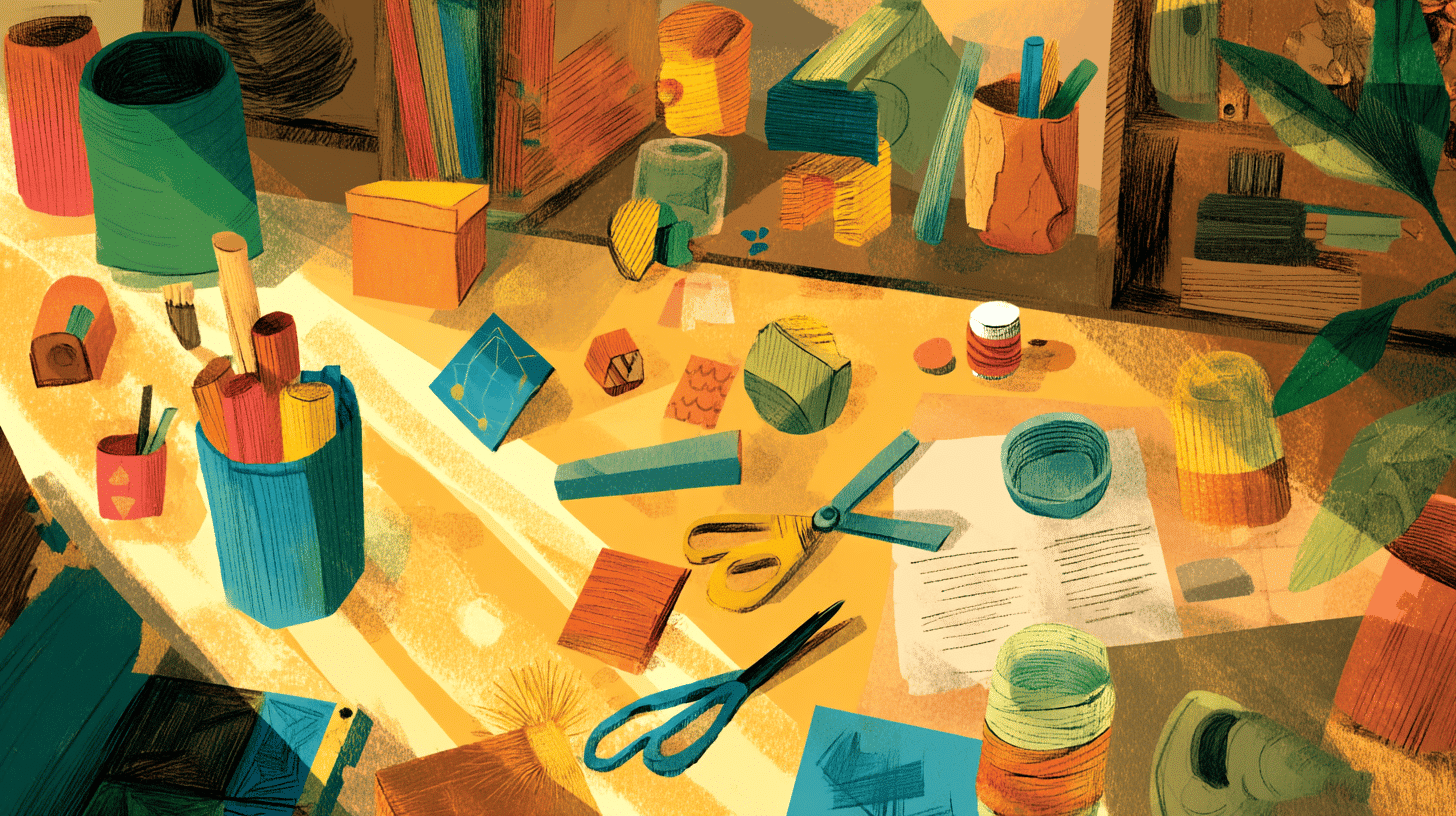These days, the concept of sustainability goes far beyond just recycling. It’s a lifestyle that can be incorporated into many facets of our daily lives, including crafts. In this post, we’ll explore how you can transform everyday materials into amazing, sustainable craft projects. Not only will we discuss the benefits and positive impact of sustainable craft practices, but we’ll also provide practical examples so you can get started right away.
Why choose sustainable crafts?
In today’s age of overconsumption, sustainable crafts are a breath of fresh air. By reusing and recycling materials, we are not only reducing the need for new products, but also creating unique pieces that have stories to tell. Sustainable crafts promote creativity, reduce waste and can even result in financial savings.
One of the great things about sustainable crafts is that they allow people to express themselves in ways that are both creative and responsible. Plus, you can often find everything you need at home; there’s no need to shop at expensive stores. This makes this practice accessible to everyone, regardless of budget.
Materials you already have at home
One of the best parts about getting started in the world of sustainable crafting is that you probably already have a lot of materials at home that can be reused. Here’s a list of items you might have lying around your house that are great for crafting projects:
Plastic bottles:
Perfect for creating vases, organizers and sculptures. 2. Old newspapers and magazines: They can be used to make papier-mâché, collages and decorations. 3. Cardboard boxes: Great for creating toys, organizers, and art projects. 4. Old clothes: Fabrics that we no longer use can be transformed into blankets, bags or even new clothes. 5. Glass bottles: Ideal for storage, lanterns and decoration.
Practical sustainable craft projects
Now that we know how to get started with materials we have at home, let's explore some project ideas that can be done easily, involve the whole family and are great for stimulating creativity.
1. Creating vases from plastic bottles
Plastic bottles are plentiful and can be repurposed to create beautiful plant pots. Start by cutting off the top of the bottle. Paint it with water-based paint or use colored contact paper to add a special touch. You can even add string to create a stand. The result will be a unique plant pot that you can use both indoors and outdoors.
2. Papier-mâché with newspaper
Using old newspapers and a solution of water and glue (or flour), you can create a paste and mold different shapes or objects. Once dry, you can paint and decorate with other recycled materials. This is a great project to do with children, allowing them to create their own pieces of art.
3. Organizing with cardboard boxes
Turn cardboard boxes into desk organizers. Cut the boxes into different sizes and cover them with wrapping paper or paint. This not only helps organize clutter, but it also makes your workspace look nicer.
4. Turning old clothes into accessories
Old clothes that you no longer wear can be turned into new accessories. You can cut and sew pieces of fabric together to make scarves, bags, or even pillows. This can help revitalize your wardrobe and save you money.
5. Decorative glass jars
Mason jars can be turned into lanterns or flower vases. Use string, paint, or even decoupage to decorate them. Light a candle inside to create a cozy effect on special nights, or use them as part of a table decoration.
Connecting with the Community
One of the best things about sustainable crafts is how they can connect people. As you create unique pieces, you might consider organizing a craft swap event in your community. Not only does this encourage creativity, it also promotes social engagement and awareness of sustainable practices.
Tips for a sustainable, artisanal lifestyle
– Set aside one day a week to dedicate to crafting. Not only does this help you develop your skills, it also gives you extra time to connect with friends or family. – Whenever you buy something new, consider whether there is a reusable or recyclable alternative. This mindset can gradually change the way you consume. – Research local or online groups that share an interest in sustainability and crafting. The exchange of ideas, knowledge, and even materials can be inspiring.
Enjoying the process
Sustainable craftsmanship is more than just making things; it’s a lifestyle that fosters creativity and environmental awareness. Sometimes it’s not the end product that counts, but the process and experience of creating something unique and handmade. Whether you’re just starting out or already have experience, there’s always a new technique or material to explore.
Conclusion
Adopting a sustainable crafting lifestyle offers a number of benefits, not only for you, but for the environment as a whole. By reusing materials you already have, you not only contribute to reducing waste, but you also instill a sense of creativity and innovation into your daily life. No matter your skill or experience, there’s always a project waiting for you. So grab a few boxes, a plastic bottle, or that stash of old clothes and start your sustainable crafting journey today!
If you enjoyed this post, share your experiences with us in the comments. What’s your favorite sustainable craft project? Let’s inspire each other to create beauty in the midst of everyday life!



